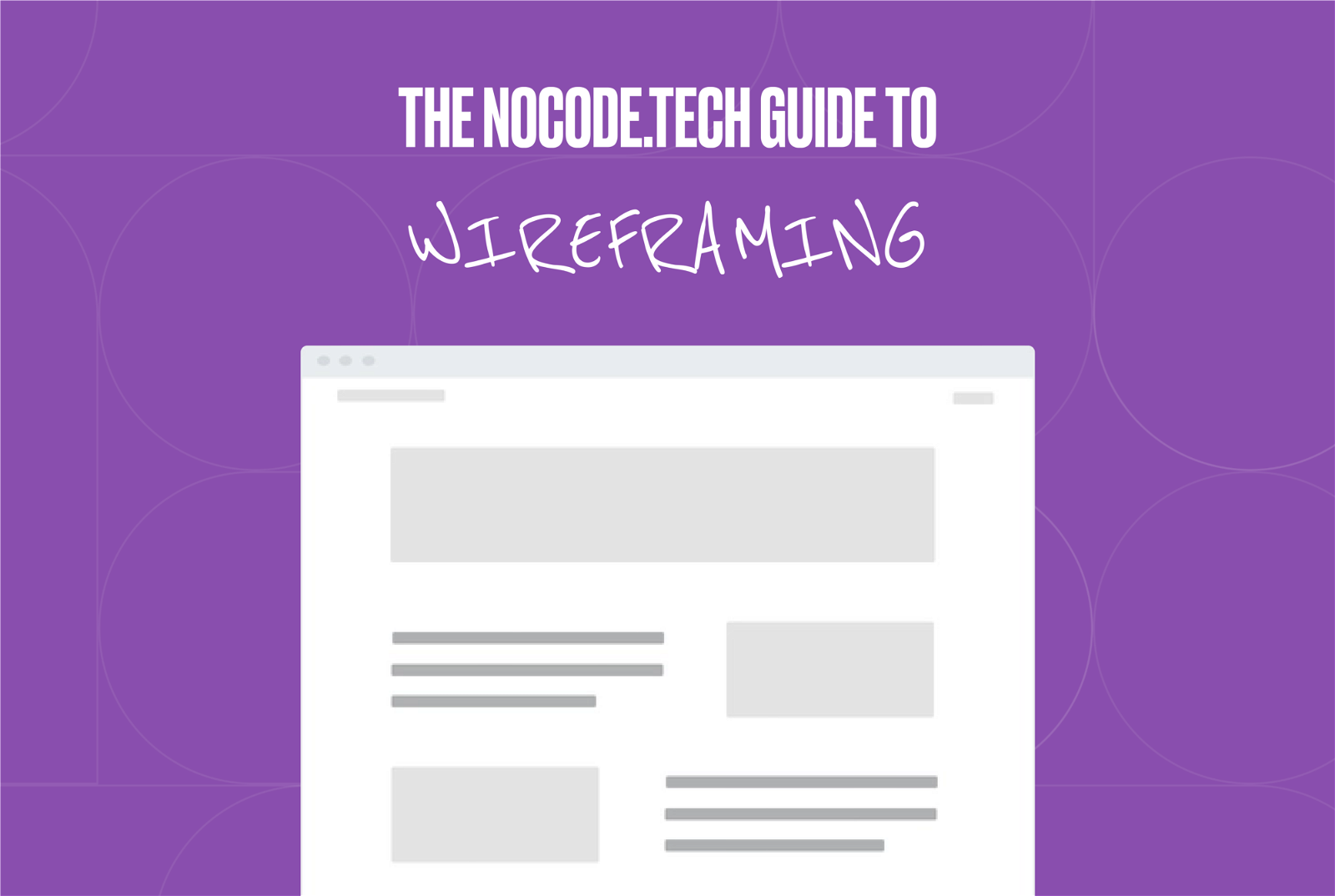Designing success: Why wireframing matters in no-code app development
Failing to plan is... yes, you guessed it. Wireframing is key to app development.
Table of Contents
Wireframing is a key part of the design process for a reason. If you’re planning on building an app with no-code, creating a lo-fi blueprint has benefits you might not have thought about.
Once you’ve settled on the objective and aim of your app, the next part of your design process should be plotting out how the app should actually work. That’s where wireframing comes in. Wireframes are essentially a lo-fi blueprint of the app you’re going to build: a 2D, simplistic illustration of your app’s interface. An architect wouldn’t get down to a house-build without drawing up some plans and blueprints beforehand (we would hope). Well, you’re the architect of your app; that same logic applies.
For no-coders, this is as much about communication as it is about planning. You need to find ways to communicate your ideas with others before any resource is devoted to actually building the app. That’s particularly true if there are other stakeholders involved who’ll want input on whatever your final app ends up looking like – or need persuading that there’s even a case for it.
We’ve heard it said by some no-code platforms that wireframing is something you can skip because of their drag-and-drop interface. There’s some truth in that, but this is a classic example of putting the prep in beforehand to save time, arguments and meltdowns later on.
Wireframing aims to make your app as intuitive and easy to use as possible. Creating a logical, carefully considered interface is perhaps the most important element of that.

The key benefits:
1. You can plan things out in a visual way
Using a wireframing tool gives you the ability to think about and plan the layout, content and functionality of whatever app you’re planning to build in a visual way. You’re suddenly thinking logically about the user experience: how a user navigates their way through your app to complete whatever action you want them to.
2. They help you spot design errors – saving time and cash
Having that visual skeleton is super helpful in seeing obvious problems that a user might have, or things that don’t make logical sense – especially if you can get it in front of others in your team. Catching those kinds of design errors early means making changes and adjustments before you’ve started building your app in your no-code platform of choice. That’ll save time and cash.
3. They encourage simple collaboration
If you’re working in a larger business or organisation, chances are that you’ll need some serious buy-in from others in your team. Wireframing helps you simply and effectively communicate your wild ideas and plans for your app in a visual way. Anybody can look at it and quickly get a solid understanding of how the app works and what the user journey will look like. That opens up avenues for quick and constructive feedback and, most importantly of all, a subtle nod of the head that says “We love it. Go and build”.
4. You can experiment and build something cool
Wireframing tools allow you to create blueprints of your app quickly. Making changes, tweaks and adjustments is super simple – and a lot easier than later down the line when you’re trying to think about your interface as you build. You can play around. Explore your wildest ideas. Try things. Very quickly it’ll be clear whether what you’ve come up with makes sense or not, but that fundamentally encourages creativity and originality that is harder to come up with during an app build.

The takeaway
It’s easy to think of wireframing as something reserved for designers and developers, and not something that no-coders really need to think about. But putting the necessary time and thought in before you get down to business encourages creativity and collaboration. It also increases the chances of you making a successful, easy to use app.
Next steps
There are some great wireframing platforms out there, including Balsamiq, Justinmind and Figma.


Similar Tutorials
Want to read
more articles
like these?
Become a NoCode Member and get access to our community, discounts and - of course - our latest articles delivered straight to your inbox twice a month!











